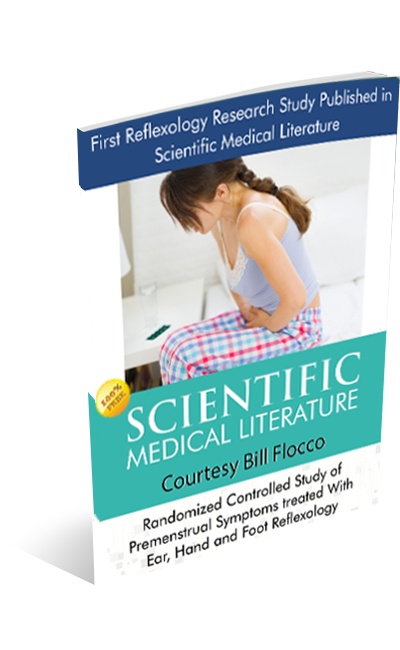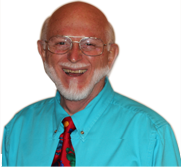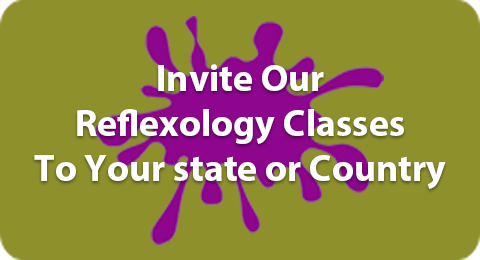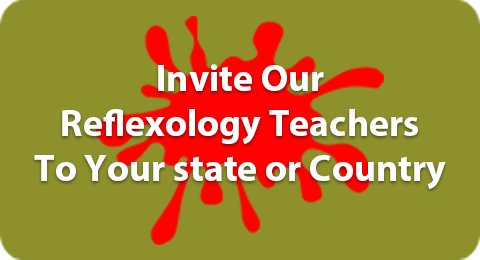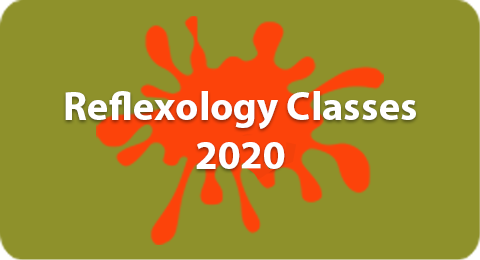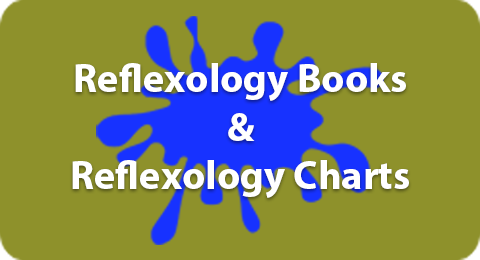- About The American Academy of Reflexology
- The American Academy Of Reflexology Is The First School To:
- What Is Reflexology? Definition of Reflexology
- Benefits of Reflexology, Stories, Reflexology Studies
- Documented History of Foot, Hand and Ear Reflexology
- History of The Flocco Method – Integrating Foot And Ear Reflexology
- 7 Principles Of Integrating Foot Hand Ear Reflexology
- How Does Reflexology Work
- Difference Between Reflexology and Massage
- Difference Between Reflexology and Acupressure
- Difference Between Ear Reflexology and Auriculotherapy
- I Understand You Can Diagnose With Reflexology
- Who Studies Reflexology?
- Reflexology As A Career
- Reflexology Continuing Education for Many Professions
About The American Academy Of Reflexology
You can have confidence when you study with us, as, since 1982, over a third of a century, The American Academy of Reflexology (AAR) has been a leader in Beginning, Continuing Education, and Certificate Courses in the field of Reflexology across United States and the world. Thousands of students on four continents have become highly successful practitioners of Reflexology, either focusing exclusively on Reflexology, or including Reflexology with Massage Therapy, Bodywork, Acupressure, Acupuncture, Chiropractics, Nursing, Cosmetology, Esthetics/Skin Care, Physical Therapy, Yoga, Fitness, Podiatry, Naturopathy, and other fields of the healing and caring arts.
One of our commitments to you is to be on the leading edge of what is best in the field of Foot Reflexology, Hand Reflexology, Ear Reflexology, and especially integrating Foot Hand Ear Reflexology into each Reflexology Session for far greater results. Our students have the benefit of time proven methods and techniques combined with the latest most effective knowledge and breakthroughs. The American Academy of Reflexology is proud to have pioneered a number of contributions that helped to advance the field of Reflexology.
The American Academy Of Reflexology Is The First Reflexology School To:
- Establish an educational program dedicated to the Integration of Foot Hand Ear Reflexology, any place in the world 1982
- Teach Beginning and Extended Certification Courses in Foot Hand Ear Reflexology 1983
- Discover dramatic advantages of Priority Reflexing (when Foot Reflexology, Hand Reflexology or Ear Reflexology is most effective for different health challenges and different parts of the body) 1983
- Discover dramatic advantages of Progression Reflexing (where to reflex 1st, 2nd, 3rd between Foot Reflexology, Hand Reflexology and Ear Reflexology, for most effective reduction and elimination of pain, in different parts of the body) 1983
- Spread the Integration of Foot Hand Ear Reflexology internationally 1991
- Receive the International Council of Reflexologists (ICR) Reflexology Research Award 1991
- Sponsor examinations by the independent American Reflexology Certification Board (ARCB) 1992
- Receive scientific validation of Foot Hand Ear Reflexology in published medical literature 1993
- Teach Integration of Foot Hand Ear Reflexology to Foot Reflexologists and Medical Doctors in China 1994, 1996, & 1999
- Initiate World Reflexology Week, WRW, by introducing the concept to the International Council of Reflexologists ICR 1997
- Compile a comprehensive document of 311 Reflexology Research Studies from around the world. Project given to ICR 2001
- Length, Depth, Progression and Content of the Introductory Workshops, Full Certification Course, and Continuing Education Classes in Foot Reflexology, Hand Reflexology, and Ear Reflexology, leading to Integrated Foot Hand Ear Reflexology Certification.
- The quality of the Academy’s Instructors, personally selected and trained by Bill Flocco, only after they have had years of experience as active practitioners of “The Flocco Method – Integrating Foot Hand Ear Reflexology“.
- Core Instructors Are Personally Taught by Bill Flocco, over a several year period of time, the refinements of the art of adult education. Bill has over fifty years teaching experience specializing in Adult Learning needs and dynamics.
- Special Inner Quality that each instructor carries that immediately lets the student know how sacred each student is, and, how much they are respected and valued.
- All Learning Materials are Specifically Written and developed for our classes and students.
- Our Profound Commitment to each student to help you become the best practitioner of Reflexology that you can possibly become.
- You Can Have Confidence In What You Will Learn, partly because “The Flocco Method–Integrating Foot Hand Ear Reflexology” is the first reflexology method scientifically documented for it’s effectiveness, during a rigorous and demanding six month long peer review randomized, controlled, blind study. The American Academy of Reflexology conducted the first reflexology research study ever published in scientific medical literature. “Obstetrics & Gynecology” December 1993; Volume 82, pages 906-911
We have taught thousands of people on four continents to be highly successful practitioners of Foot Reflexology, Hand Reflexology, Ear Reflexology, Integrated Foot Hand Ear Reflexology, and look forward to doing the same for you.
What Is Reflexology?
Imagine walking into a softly lighted, tastefully appointed room, taking off your shoes and socks, lying down on a comfortably cushioned reflexology table and for the next hour, while a Certified Reflexologist nurturingly works on your feet, hands and outer ears, you experience profound relaxation as wave after wave of accumulated tension and stresses leave your body. You walk away feeling more relaxed and better than you felt for quite a while.
Definition Of Reflexology
Reflexology is the study, art, and science of applying specific touch techniques to the Feet, Hands, and outer Ears where theory suggests there is a pressure map resembling a shape of the Human Body. By applying nurturing touch in specific ways, a wide range of health benefits have been reported.
Benefits Of Reflexology
Thousands of specific benefits have been reported from people who have received reflexology sessions. The broad range of reported benefits can be divided into several categories.
General Benefits of Reflexology
- Stress reduction, profound relaxation, for all parts of the body,
- Pain reduction and pain elimination, such as in the neck, shoulders, lower back and jaw,
- Improved circulation resulting in better oxygen and nutrient supply to all the cells of the body,
- Detoxification,
- Improved organ and gland function,
- Increased range of motion,
- Feeling better, greater productivity, enriched quality of life,
- Normalization of body functions,
- Prevention by reducing accumulated stress in the body before health challenges develop,
- Safe nurturing touch.
Success Stories
Here are just a few stories of people who have had the quality of their life improved because of reflexology.
- Anyone with health challenges that persist should see their doctor or primary health care provider. Although an amazing number of people around the world have reported remarkable results from Reflexology, it should not be used as a substitute for appropriate medical attention.
Hundreds of Reflexology Studies Reporting Benefits
For an alphabetical list of topics and health challenges studied in 380 Reflexology Research Studies and Clinical Case Studies from around the world, go to www.ReflexologyResearch.net.
Documented History Of Foot, Hand and Ear Reflexology
Reflexology was discovered
In the 20th Century by three Medical Doctors.
Hundreds of books have been written about Reflexology and thousands of web sites on the Internet refer to Reflexology. Yet, there are common misconceptions about the origins of Reflexology, where and when Reflexology was first discovered. What follows is the Documented History of Reflexology.
History of Hand Reflexology and Foot Reflexology
1917 William Fitzgerald, M.D., USA, in his book, Zone Therapy, postulated the theory of 10 wide vertical zones running the entire length of the body, every part of the body being in one or more of the zones. He is frequently called the father of reflexology.
1924 Joe Shelby Riley, M.D., USA, in his book, Zone Reflex, suggested, for the first time in recorded history, the existence of horizontal zones going across the body, in an orderly arrangement. He also made the first detailed drawings of reflexes or pressure points on the feet and hands, that suggested a shape of the human body, with the tips of the fingers and toes corresponding to the head, progressing downward, with the heel of the feet and hands corresponding to the lower parts of the body. In his book, Dr. Riley included an illustration of the outer ear with just a few pressure points. The full reflex map of the body on the outer ear had not yet been discovered.
1938 Eunice Ingham, a physical therapist working in Dr. Riley’s office in Florida, wrote the first layperson’s book on Foot Reflexology, Stories The Feet Can Tell, and popularized classes in Foot Reflexology across America. Her work was then continued by her nephew, Dwight Byers.
1975 Mildred Carter wrote and published the first book on Hand Reflexology, Hand Reflexology: Key to Perfect Health
1982 Bill Flocco established and popularized beginning and advanced classroom instruction in Hand Reflexology
History Reflex Maps on Sides of Brain
1935 Willard Penfield, M.D., USA, a neurosurgeon, documented two reflex maps of the human body on the cerebral cortex (the outer covering of the brain) from near the temple to the top of the brain. (All medical doctors have to study this reflex map in their classes on neurophysiology. Each reflex map is called a homunculus, meaning little man.)
History – Ear Reflexology
1957 Paul Nogier, M.D., France, also a neurosurgeon, documented for the first time in recorded history a complete reflex map of the human body located on the outer ear. Doctor Nogier is the father of Auriculotherapy, the medical approach of diagnosing and treating illnesses with medical implements. Auriculotherapy is the medical approach to working with the reflex map of the body on the outer ear, where Licensed Medical Practitioners can legally diagnose, prescribe, and use implements to treat specific illnesses.
1959 Nanjing (Nanking) Army Ear Acupuncture Research Team, China, verified Dr. Nogier’s ear reflex map and went on to discover a similar yet different ear reflex map.
1972 Paul Nogier, M.D., published the first book on Auriculotherapy, Treatise of Auriculotherapy. In French.
1982 Bill Flocco coined the term Ear Reflexology. He had seen Auriculotherapy Charts in Medical Doctor’s, Chiropractor’s, and Acupuncturist’s offices. These medical professionals were licensed to do Auriculotherapy, where they could legally diagnose, prescribe, and use implements to treat specific illnesses.
Flocco reasoned, that since working with fingers and thumbs on the reflex maps of the body on the feet is called Foot Reflexology, and using touch on the reflex map of the body on the hands is called Hand Reflexology, then working with fingers and thumbs on the reflex map of the human body on the outer ears should be called Ear Reflexology.
I Heard Reflexology Discovered in Asia?
Acupressure/Acupuncture was discovered in the Asia. Foot Reflexology and Hand Reflexology were first discovered by Drs. Fitzgerald and Riley in the USA. Ear Reflexology was first discovered by Dr. Paul Nogier in France, all during the 20th Century.
Some Say Reflexology Was Discovered in Egypt?
An Egyptian pictograph showing someone working on someone else’s finger and toe is a clear indication that something of significance was happening to one finger and one toe. In the May 1997 issue of the International Council of Reflexologists Newsletter, starting on page eleven, it is documented that six Egyptologists (leading authorities in Egyptian Pictogrophy) clearly stated that the Pictograph depicted the prelude to surgery… not Reflexology
Reflexology was discovered
In the 20th Century by three Medical Doctors.
Drs. Fitzgerald and Riley from the mid 1920’s onward taught about the reflex maps, at first mostly on the hands, then later mostly on the feet. In the 1930’s, Eunice Ingham who worked as a physical therapist in Dr. Riley’s office in Florida, taught the reflex map on the feet, mainly to lay people across America. At first she called it compression massage, later to call it Reflexology. By the 1950s Eunice Ingham was printing the word “Reflexology” on Certificates given to her students. Before 1960, Reflexologists had never heard of or seen a Pictograph of a finger and a toe being worked on. The map of the body on the outer ear was discovered in 1957 by Dr. Nogier, in Lyon, France.
How Did Misinformation
About Reflexology in Egypt Start?
Here is how the inaccurate information came about. In 1960, a man from Southern California, during a vacation in Egypt, came upon a book with a colorful pictograph of two people, one touching a toe, the other touching a finger of two other people. An arm pit and knee are also being touched. This person came back to the USA, and, without asking specialists in Egyptology about what the picture really meant, exclaimed that the picture was the beginning of Reflexology.
Foot and Hand Reflexology had been practiced in the West for over 30 years before the pictograph of touching a finger and toe was ever seen in the West.
For Reflexology to achieve the respect it deserves, one of the steps in that direction is to correct all of the misinformation that is out there and for everyone to use the Documented Validated History – that Reflexology was discovered in the 20th Century by three Medical Doctors, Drs. FitzGerald & Riley USA, and Dr. Nogier in France.
History of The Flocco Method – Integrating Foot Hand Ear Reflexology
1982 Bill Flocco, Los Angeles, California, USA, began exploring working with all three reflexology maps – those on the feet, hands and outer ears. During the next several years, he discovered specific advantages to helping people feel better.
Priority Reflexing. Some health challenges are best addressed by Foot Reflexology, others by Hand Reflexology, and yet others respond far better to Ear Reflexology. This is called Priority Reflexing, which is best for specific conditions or parts of the body, Foot Reflexology, Hand Reflexology, or Ear Reflexology. In other words, when there is pain or discomfort in each specific part of the body, where to go first – which is the top priority – feet, or hands, or outer ears.
Progression Reflexing was also discovered. Progression Reflexing is based on the principle of knowing where and how to progress from 1st priority to 2nd, to 3rd; which of the three – feet, hands, or ears – to reflex 1st, 2nd, and 3rd, for alleviating pain in specific parts of the body, most consistently and more dependably in helping the body address that pain.
Further, it was discovered that working all three reflexology maps – those on the feet, hands and outer ears – during the same reflexology session, helps deliver more effective results for relief of a wide range of health challenges, than working just feet, or just hands, or just ears.
This approach to learning and applying a variety of ways of
Integrating Foot Reflexology, Hand Reflexology, and Ear Reflexology
into each Reflexology Session, for better health, became known as
The Flocco Method – Integrating Foot Hand Ear Reflexology.
1983 Bill Flocco taught the first Professional Certification Length Course in the Integration of Foot Hand Ear Reflexology to be offered anywhere in the world.
1991 Bill Flocco began to travel extensively introducing Hand Reflexology, Ear Reflexology, and the Integration of Foot Hand Ear Reflexology to Foot Reflexologists by lecturing and teaching on four continents, in Australia, Canada, China, Denmark, England, Germany, Holland, New Zealand, Switzerland, and in numerous states across the USA.
1993 The American Academy of Reflexology, under the guidance of Bill Flocco and Terry Oleson, Ph.D., conducted and published the first Reflexology Research Study to be published in scientific medical literature, Randomized Controlled Study of Premenstrual Symptoms Treated With Ear, Hand, Foot Reflexology, December issue of the Journal Obstetrics & Gynecology.
1994, 1996, 1999 Bill Flocco spread the Integration of Foot Hand Ear Reflexology to China where he taught over 1800 Foot Reflexologists, hundreds of whom were also Medical Doctors, Hands-on classes in the Integration of Foot Hand Ear Reflexology.
7 Principles Of Integrating Foot Hand Ear Reflexology
As years working with The Flocco Method – Integrating Foot Hand Ear Reflexology, 7 Principles of Integration emerged, related to working with all three, Foot Reflexology, Hand Reflexology, and Ear Reflexology during each Reflexology Session.
Principle # 1
Working with any one Reflexology map – Feet, Hands, or Ears
provides good results.
Principle # 2Working with any two Reflexology maps – Feet, Hands, Ears
during the same session,
provides better results.
Principle # 3
Working with all three Reflexology maps – Feet, Hands, and Ears
during the same session,
provides even better results.
Principle # 4
Working with all three Reflexology maps – Feet, Hands, Earsduring the same session,
applying the Principles of Integration,
provides best results.
Principle # 5
Knowing which is 1st, 2nd, & 3rd in effectiveness – Feet, Hands, Ears –
especially when there is pain in the related part of the body,
and work on all three during each session.
Priority Reflexing and Progression Reflexing
Principle # 6
Repeat Reflexing during the same session.
Principle # 7
Combine Somatic (Body) Reflexes from all three – Feet, Hands, and Ears –
as well as appropriate Master Points & Functional Points on the Ears.
How Does Reflexology Work
Science, as yet, has not been able to tell us all the ways that Reflexology works. There are approximately 20 theories about how Reflexology works. Some of the theories are:
- Anthropologic: Nature provided a way for us to balance ourselves through the reflex maps
- Biomechanics Of The Feet: Bones and muscles out of alignment can keep the reflexes from completely balancing
- Caring Touch: The healing ability of love is well known
- Closed Bio-electric Circuitry: Discovered by Bijorn Nordenstrom, this theory suggests Energy flows along blood vessels & through fluid between the cells
- Laying On Of Hands: Energy flows from hands of giver into body of the receiver
- Meridian Theory: Meridians — thin energy lines that have pressure points
- Neurological Theory *: Congestion between nerve endings
- Outer Energy Balance: Balance the energy field around the body
- Robert Becker: Energy is attracted to the area where it is needed by differences in electric impulses
- Pieso Electric System This theory suggests an electrical system that travels through the fascia (shiny connective tissue) of the body.
- Placebo: Some people get better just because they think or believe they will get better.
- Rest: Gives the body’s coping mechanism a rest so that self-mending can happen.
- Zone Theory: Wide strips that run the length of the body, also from front to back.
- Until science can tell us for sure how reflexology works, it is reasonable to suspect that it works for more than one reason, possibly for many reasons. However, the most widely accepted theory is that Reflexology works through the nervous system
- Neurological Theory The Nerve Theory is the universally held as the main theory of the connection between the reflexology body maps on the feet, hands, and ears, to the rest of the body.
Substance “P” One school of thought within the Nerve Theory suggests that when imbalance (tension, stress, discomfort, illness, pain, etc.) occurs in the body, a chemical made by the body, scientifically known as “Substance P”, accumulates around nerve endings found in the reflex areas of the feet, hands, and ears that correspond to the stressed part of the body. For example, when there is neck tension, blockage (Substance P) accumulates in the neck reflex area of the feet, hands and ears. By the way, the ‘P’ in Substance P stands for Pain.
By using touch techniques specific to the study and application of Reflexology, nurturing pressure is applied in ways to break down and dissipate the Substance P. With the Substance P and other chemicals having been broken down and dissipated from the reflex area, people report feeling better.
Difference Between Reflexology & Massage
Massage deals with touch all over the body with major emphasis on muscular, circulatory and lymphatic systems. Reflexology, by working on complete reflex maps on the feet, hands and outer ears, not only helps the muscular, circulatory and lymphatic systems, but also profoundly effects the inside of the body, such as everything inside the head, inside the neck, inside the chest and inside the abdomen. In reflexology, only footwear is removed with the client otherwise staying fully clothed.
Difference Between Reflexology & Acupressure
Both Reflexology and Acupressure fall into the category of touch therapies called Reflex Therapies. However, they each work under very different energetic principles and extremely different reflex point locations.
Acupressure deals with over 14 long thin energy lines called meridians that run most of the length of the body. There are more than 800 pressure points along these lines, of which, fewer than 30 are found on the feet and the hands with only one meridian acupressure point on the bottom of the feet, and only one meridian even coming close to the ear, in the crease behind the outer ear.
Reflexology, in contrast, has an entire reflex map of the body on the feet, a second complete reflex map of the body on the hands and a third complete reflex map of the body on the outer ear.
Difference Between Ear Reflexology & Auriculotherapy
Auriculotherapy is the approach used by Licensed Medical Practitioners, usually Medical Doctors, Acupuncturists, Chiropractors, Physical Therapists, and Dentists. Within their Scope of Practice, they are legally licensed to Diagnose, Prescribe, and use implements to treat specific illnesses. Reflexologists are not. Reflexologists use specific touch techniques nurturingly applied to the outer ear, to help the different parts of the body relax so that all parts function better, thus helping the body to better heal itself.
I understand You Can Diagnose With Reflexology
Unless you have been through medical school and are licensed to diagnose, in most countries of the world, it is illegal to diagnose, consequently, it is illegal to diagnose with reflexology. More importantly, it is unethical, in the opinion of Bill Flocco, Director of the American Academy of Reflexology to diagnose with reflexology for two additional reasons. Irregularities (such as tenderness) in a reflex area, can be caused by many different factors, such as a bone out of alignment, a strained muscle, or poor circulation in the feet or hands. Secondly, a number of research studies conducted to determine if reflexology could be used as a dependable diagnostic approach, give different results with a couple of studies in China showing some favorable results while another study conducted by Medical Doctors and Reflexologists in England, demonstrated that reflexology is not effective for diagnosis.
Who Studies Reflexology?
Based on observation of students who entered the AAR Reflexology Training at the American Academy of Reflexology for more than three decades, most people who study Reflexology fall into four groups.
1st People In Transition: Most people who study with the AAR are in transition, wishing to find part or full time income in a profession that has heart, that is nurturing, that is caring, respectful and honoring of others and themselves. They want a career where, if they approach it like a business, they can make a respectable income as well.
2nd Those wanting to work on themselves, their family, and friends: The second most common reason people study with the AAR is to help themselves, their families and friends.
3rd Professionals wanting to add Reflexology to what they already do: The third most common reason are people in the caring and healing arts who are looking for additional approaches to help their clients as well as an additional source of income: Massage Technicians, Massage Therapists, Bodyworkers, Cosmetologists, Estheticians, Manicure and Pedicurists, Physical Therapists, Fitness Trainers, Yoga Teachers, Nurses, Chiropractic Physicians, Acupuncturists, Doctors, many other professionals.
4th Those wanting to give back to the world by volunteering using Reflexology on the needy: Once Academy Graduates are Certified Reflexologists, those who wish are given a number of options as to where and how they can volunteer their time to the needy. Volunteers work with hospice, shut-ins, children’s hospital, infants, geriatrics, HIV Aids, and more.
Reflexology As A Career
Reflexology is rapidly emerging around the USA and the world, as a separate, highly respected independent profession. In fact, worldwide, Reflexology is possibly the most rapidly growing profession within the touch therapies. Reflexology has been featured on almost every major TV talk show, has been featured in numerous magazines, is acknowledged by a number of major insurance companies and HMO’s, has professional reflexology organizations, is the subject of international reflexology symposia and conferences, has extensive published research validating it’s effectiveness, has over a hundred books written on the subject, and is recognized by both the White House Commission on Complementary and Alternative Medicine, as well as the National Institutes for Health’s Center for Complementary and Alternative Medicine (NCCAM) and The National Foundation for Women Legislators.
Part Time Career Most people who practice reflexology professionally, do so on a part time basis and are self-employed.
Full Time Career There are people in many parts of the USA and in quite a few other countries making a full time career of Reflexology. They have high quality education, support their professional Reflexology Organizations, and approach building their Reflexology Practice like any other business, with sound business building practices.
Sound Business Practices The income a practitioner achieves is primarily dependent on their personal diligent efforts. If you decide to practice full time, we encourage you to build your practice on a part time basis, keeping your current employment, until income from your reflexology practice is abundant enough to replace your current income.
Laws For Practicing Reflexology There are no laws that apply to practicing Reflexology on yourself, on family, friends, as long as it is free – no donation, fees, goods, or services exchanged. For doing Reflexology Professionally, for exchange of – donation, fees, goods, or services – the laws in each country around the world should be checked. Within some countries, such as within the USA, since education is a function of the state, check into the State Level Laws or local City or County Ordinances, as to what laws might apply to practicing Reflexology.
Reflexology Continuing Education for Many Professions
Most professions either require or encourage practitioners to continue their education and continue to grow as a professional by periodically taking Continuing Education.
Who Takes Reflexology Continuing Education Workshops?
During more than three decades of offering a wide array of fascinating of continuing education classes and workshops, we have found these professionals to be the most common participants:
- Reflexologists
- Massage Therapists
- Bodyworkers
- Nurses
- Cosmetologists
- Estheticians
- Manicurist & Pedicurists
- Fitness Coaches
- Chiropractors
- Acupuncturists
- Podiatrists
- Medical Doctors
- Physical Therapists
- Hypnotherapists
- Naturopaths
- Herbalists
- Aromatherapists
- And other practitioners of the healing and caring arts.
Benefits of taking Reflexology Continuing Education Workshops
Learn:
- Reflexology Maps, Techniques, Skills, from around the world
- More about Foot Reflexology, Hand Reflexology, Ear Reflexology
- About Integrating Foot Hand Ear Reflexology
- Gain “Specializations” within the field of Reflexology
- New Techniques
- To be more effective
- More ways to help clients
CE Hours For:
- Licensing in some states
- License Renewal in some states
- ARCB National Certification
- Professional Reflexology Association Membership, State/National
- Renewing higher level of liability coverage ABMP
- NCBTMB
Gain More Ways Towards:
- Educating clients about self-help Reflexology
- Meet people of other methods, schools, and philosophies.
- Networking
- Personal enrichment and growth
- Professional enrichment and growth
- Renewing enthusiasm & inspiration for Healing & Reflexology
- Exercising your brain
Others:
- Broaden your job options & opportunities: spa, sports, hospice, maternity, infants, seniors, oncology, Chronic & Degenerative Disorders clinics, etc.
- Marketing by letting clients know you are keeping up to date with latest developments
- Increase your credibility and legitimacy in the eyes of clients, colleagues, other professionals and the community
Most practitioners are always there for their families, their friends, patients and clients, but don’t get worked on themselves. Some of these people take Reflexology Continuing Education classes so they can get nurturing touch for themselves, as well as the many healthful benefits of being worked on periodically throughout the hands-on workshops.
“““““““““““““//““““““““““`//“““““““`

